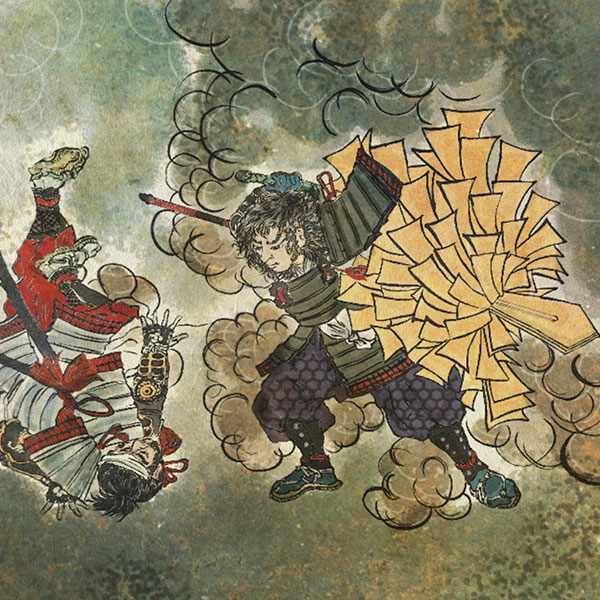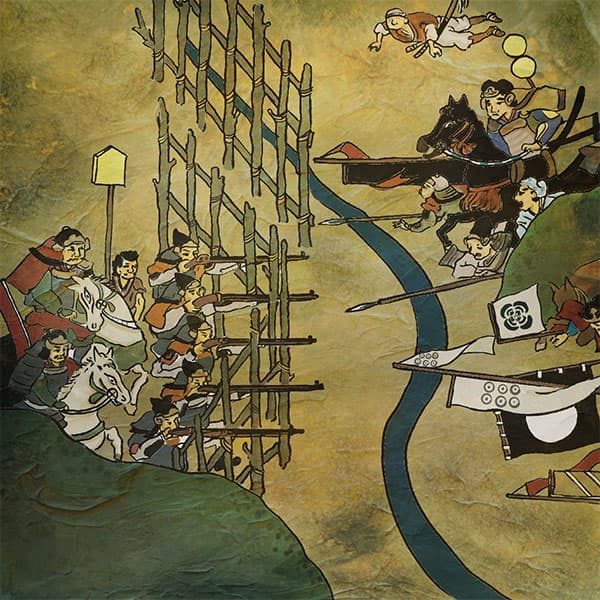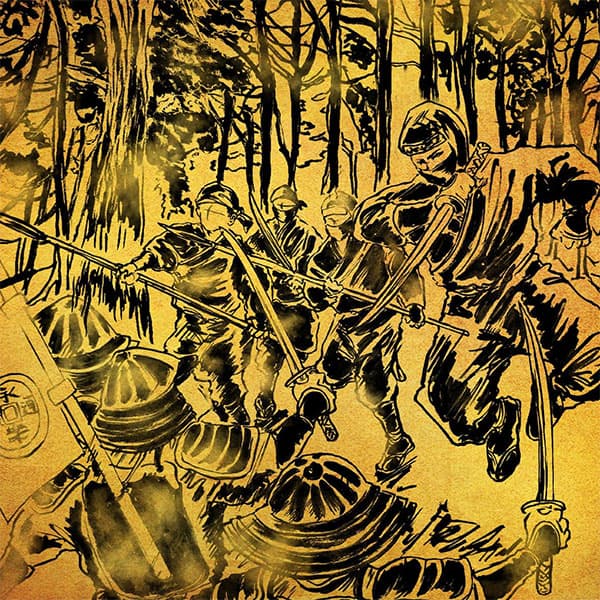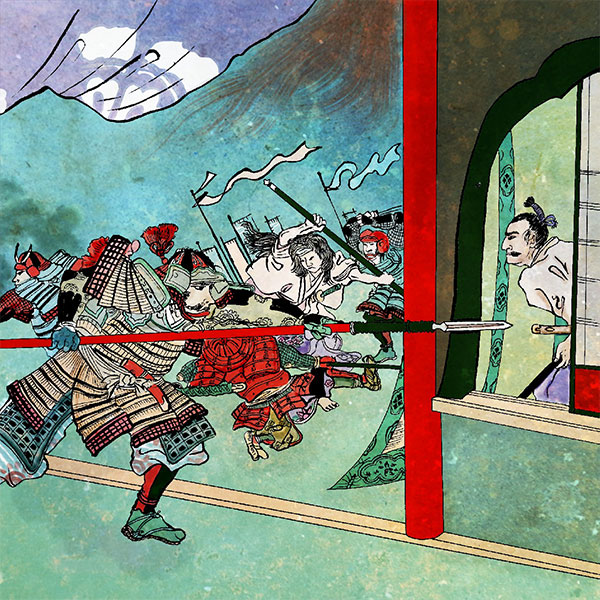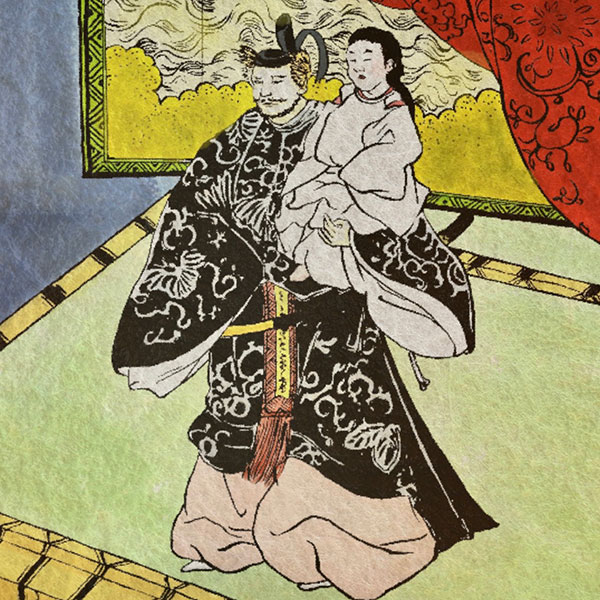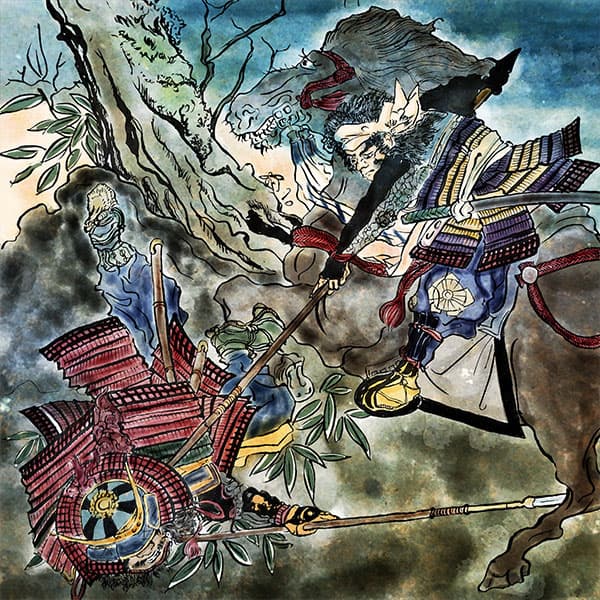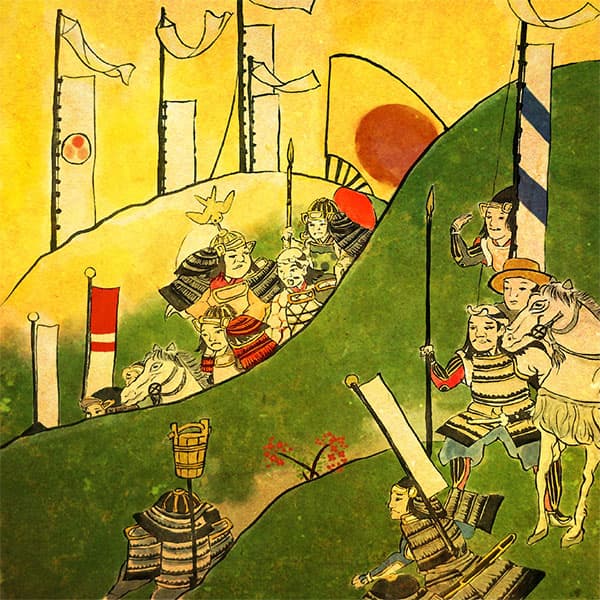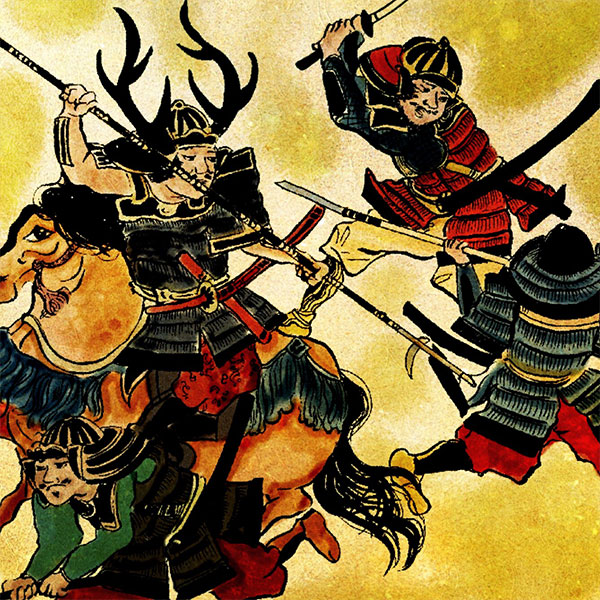Nobukatsu Oda (1/2)Head of the Oda clan after Nobunaga's death
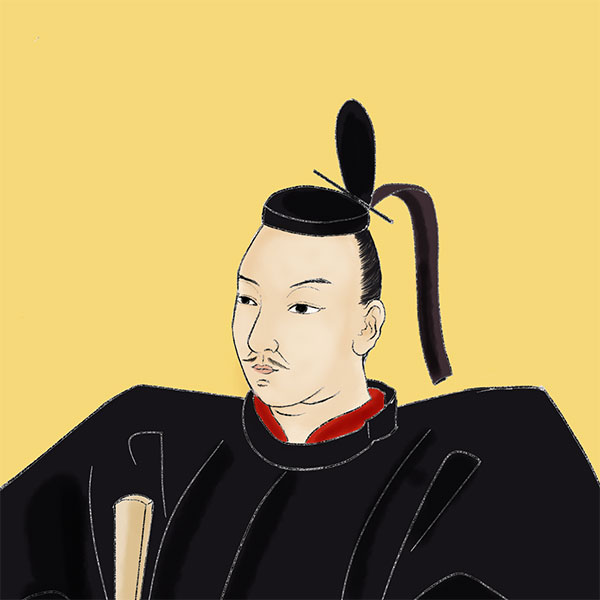
Nobuo Oda
- Article category
- biography
- name
- Nobukatsu Oda (1558-1630)
- place of birth
- Aichi prefecture
- Related castles, temples and shrines

Kiyosu Castle

Matsuzaka Castle
- related incident
In the late Muromachi period, in a world known as the Warring States period, Oda Nobunaga expanded his influence. However, Nobunaga was forced to commit suicide by Akechi Mitsuhide in the Honnoji Incident. After Nobunaga's death, Oda Nobukatsu became head of the Oda clan. Nobukatsu was born as Nobunaga's second son. With territories centered around Ise Province, Nobukatsu won the political struggle within the Oda clan after the death of his father Nobunaga, but was brought down by Toyotomi Hideyoshi. This time, we will look at Nobunaga's son, Oda Nobukatsu.
What is Oda Nobuo's name?
There are two ways to read Oda Nobuo's name "Nobuo": "Nobuo" or "Nobukatsu."
All of the vassals who were given the name "O" by Nobukatsu were pronounced "Katsu." Also, since it is written as "Nobukatsu" in the "Goyudono Jounal" diary, "Nobukatsu" is thought to be the common reading.
On the other hand, in the family tree (Kansei Shoshu Shokafu, Oda Keizu), the furigana is written as "Nobuo," and since his children Hideo and Yoshio are pronounced "wo," it is also thought that his name is "Nobuo."
In addition, it was also thought that "Nobukatsu" was read as "Nobuyoshi." Since there is no definitive evidence for these readings, even today it is read in two ways, "Nobuo" and "Nobukatsu." Here, I would like to proceed with "Nobukatsu."
Nobunaga Oda's second son, Nobuo
Oda Nobukatsu was born in 1558 as the second son of Oda Nobunaga. His childhood name was Chasen (Maru). His mother was the daughter of Ikoma Iemune, a retainer of the Oda clan (Yoshino or Orui), and he had two siblings, the eldest son Nobutada and his sister Tokuhime (wife of Tokugawa Nobuyasu). Nobunaga is said to have named Tokuhime "Godo" in the hope that the three would support each other like a trivet (a stand for placing pots, kettles, etc. over a fire) and contribute to the prosperity of the Oda clan.
In addition to these siblings, there was a third son, Nobutaka, who was born in the same month and year as Nobukatsu. Alternatively, it is said that Nobutaka was born first, but because Nobukatsu's mother was in a position similar to that of a legal wife, the announcement of Nobutaka's birth was delayed, changing the order of the siblings. This caused such a big conflict between the brothers Nobukatsu and Nobutaka that there was a popular belief that Nobutaka resented being considered the younger brother.
Adopted by the Kitabatake clan of Ise
Now, Oda Nobunaga, the father of Oda Nobukatsu. Oda Nobunaga was only a small feudal lord in Owari Province (present-day western Aichi Prefecture), but in 1567, he conquered Mino Province (present-day Gifu Prefecture) and became the lord of both Owari and Mino Provinces. Furthermore, in 1568, he went to Kyoto accompanied by Ashikaga Yoshiaki, and gained influence in Kinai (present-day Kinki).
Then, in August of 1569, Nobunaga attacked Ise Province (present-day Mie Prefecture). He laid siege to Okawachi Castle in Ise Province, but was unable to take it due to its fortress strength. The Kitabatake clan, which was under attack, resisted the attack, but the situation became deadlocked and they suffered hardship. With both sides at a stalemate, they decided to make peace. The condition of this settlement was that Oda Nobukatsu, the second son of the Oda clan, would be adopted by the Kitabatake clan. Thus, Oda Nobukatsu moved from Owari Province to Okawachi Castle in Ise Province.
Then, in the third year of the Genki era (1572, or sometimes the fourth year of the Genki era (1573)), Oda Nobukatsu came of age.
Purge of the Kitabatake clan and seizure of control of Ise Province
Now, his father, Oda Nobunaga, had brought the Kinai region under his control and was steadily expanding his territory. The surrounding feudal lords felt a sense of crisis at Nobunaga's expansion. In 1570, Azai, Asakura, Miyoshi, Rokkaku, Enryaku-ji, and Ishiyama Hongan-ji rebelled against Oda Nobunaga (the first encirclement of Nobunaga). The temples and followers of northern Ise, which responded to Ishiyama Hongan-ji, also resisted the Oda clan. In particular, two years before the previous year, small feudal lords also rebelled against Oda, who had taken control of parts of northern Ise, and responded to the uprising. The uprising, which had thus become a large-scale force, was called the "Ikko Ikki of Ise Nagashima" and resisted the Oda clan until 1574.
In 1574, Oda Nobukatsu marched against the Ikko Ikki uprising in Ise Nagashima. This was Nobukatsu's first battle.
By the way, Oda Nobukatsu was adopted into the Kitabatake family, but Ise Province was ruled by a dual political system between the former lords, the Kitabatake family, and Oda Nobukatsu. Oda Nobunaga disliked this and sneakily attacked the Kitabatake family. Ise Province now became the power base of Oda Nobukatsu. During this time, Oda Nobukatsu worked to stabilize Ise Province while also serving as a member of the Oda clan in the battle against the Takeda family (Battle of Nagashino) and in the conquest of the Ikko Ikki in Hokuriku (conquest of the Echizen Ikko Ikki).
Tensho Iga Rebellion
In September 1579, Oda Nobukatsu, who ruled Ise Province, set his sights on the neighboring province of Iga (present-day Iga City, Mie Prefecture) and attacked it on his own initiative (the Tensho Iga Rebellion). However, he was resisted by the local lords known as the Iga Twelve, who governed Iga Province autonomously, and suffered a major defeat. After invading Iga Province on his own initiative, Oda Nobunaga, upon hearing the news of the defeat, scolded him, even going so far as to say that he would "sever all ties with his father and son."
In September 1581, Oda Nobunaga, who had succeeded in splitting the Iga clan from within, invaded Iga again with Oda Nobukatsu as the supreme commander. Oda Nobukatsu took control of a part of Iga Province that had been pacified in this way, and came to rule it as Ise-Iga.
The Honnoji Incident and the Suspicion of Arson at Azuchi Castle
Oda Nobunaga was steadily expanding his territory and was on the verge of becoming the ruler of Japan.
However, on June 2, 1582, Nobunaga was killed at Honnoji Temple, and his eldest son, Nobutada, was killed at Nijo Shingosho by Akechi Mitsuhide (the Honnoji Incident).
When he heard the news of the Honnoji Incident, Oda Nobukatsu was in Ise Province. Upon hearing the news of his father Nobunaga's crisis, Nobukatsu crossed the Suzuka Pass and led his troops to Tsuchiyama, Koga County, Omi Province (present-day Shiga Prefecture). However, the local lords of Iga Province, his home territory, showed signs of rebellion, so he was unable to go any further and could only do his best to rescue the children of the Oda clan who had escaped from Azuchi Castle (Nobunaga's residence).
Akechi Mitsuhide, who had defeated Oda Nobunaga, was in turn defeated by Hashiba (Toyotomi) Hideyoshi (Battle of Yamazaki).
Now, Azuchi Castle was built by Oda Nobunaga. Azuchi Castle was burned down after the Battle of Yamazaki, where Akechi Mitsuhide was killed. The Taikoki states that Akechi Hidemitsu, a senior vassal of Akechi Mitsuhide, set the castle on fire, while the Jesus Nenpo states that Oda Nobuo set the castle on fire due to his stupidity, or that it was burned down as a result of riots or robbery by nearby bandits. Oda Nobuo was cold towards Christianity, so it seems that he was written about harshly, and the cause of the fire is still unknown today.
Conflict within the Oda clan and the murder of his younger brother Nobutaka
After Akechi Mitsuhide was killed, a meeting was held within the Oda clan (Kiyosu Conference). With Oda Nobunaga killed, there was a debate about who would succeed him as head of the Oda clan, with his second son Nobuo and third son Nobutaka fighting fiercely. In the end, Hashiba Hideyoshi brought in Oda Nobutada's son (Oda Nobunaga's grandson) Sanposhi (Oda Hidenobu) and appointed him head of the Oda clan, with the vassals supporting the young Sanposhi. At the same time, territories were distributed, and Nobuo was given the province of Owari, becoming Owari, Iga, and Ise.
However, after the Kiyosu Conference, Oda Nobutaka approached Shibata Katsuie, a senior retainer, and Nobukatsu began to rely on Hashiba Hideyoshi. Hideyoshi also promised to support Nobukatsu as head of the Oda clan. Then, in December 1582 (Tensho 10), Oda Nobukatsu and Hashiba Hideyoshi attacked Gifu Castle where Oda Nobutaka was staying, under the pretext of recapturing Sanboshi. Shibata Katsuie, who was on Nobutaka's side, was unable to come to his aid due to snow, so Nobutaka handed over Sanboshi and surrendered.
The following year, in 1583, the conflict between Hashiba Hideyoshi and Shibata Katsuie intensified. Then, in April, the Battle of Shizugatake took place. Taking advantage of this conflict, Oda Nobutaka also rose up on Shibata's side at Gifu Castle. However, the battle ended with Shibata Katsuie's defeat. Realizing that he was at a disadvantage, Nobutaka believed Nobukatsu's words of peace and left the castle, but was forced to commit seppuku by Nobukatsu's retainers and died. Thus, after the death of Oda Nobunaga, Oda Nobukatsu took control of the position of head of the Oda clan.
Conflict with Hideyoshi Hashiba and the Battle of Komaki and Nagakute
Oda Nobukatsu became the head of the Oda clan, but left the management of the clan to Hashiba Hideyoshi, and those around him saw Nobukatsu as a puppet of Hashiba Hideyoshi.
- related incident

- WriterTomoyo Hazuki(Writer)I have loved history and geography since my student days, and have enjoyed visiting historical sites, temples and shrines, and researching ancient documents. He is especially strong in medieval Japanese history and European history in world history, and has read a wide range of things, including primary sources and historical entertainment novels. There are so many favorite military commanders and castles that I can't name them, but I especially like Hisashi Matsunaga and Mitsuhide Akechi, and when it comes to castles, I like Hikone Castle and Fushimi Castle. Once you start talking about the lives of warlords and the history of castles, there's a side of you that can't stop talking about them.



